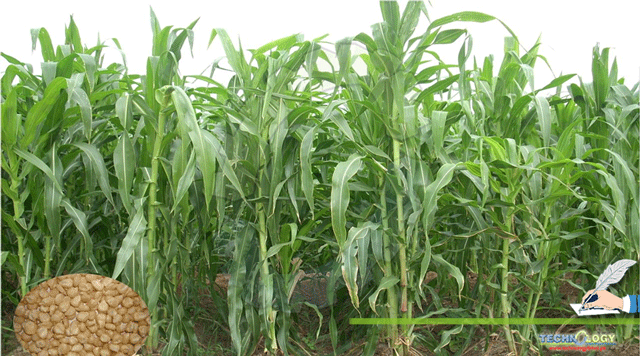Pakistan is blessed to have a diverse range of livestock. The livestock industry not only ensures food security through the production of milk, meat, and self-employment for both men and women but also significantly contributes to poverty alleviation among small livestock farmers.

By Muhammad Alamgeer and Hassan Munir
It contributes about 11.5% to the country’s GDP and 55% to the agricultural GDP. It is estimated that Pakistan has 163.0 million heads of livestock, including goats, sheep, camels, asses, mules, and horses. Livestock populations are growing at an annual pace of 4.2%, impacting how much feed is needed. For the growth and development of cattle, a consistent supply of appropriate and nutrient-rich fodder is necessary. The primary and least expensive source of feed for cattle is fodder crops. But the fodder shortage is the main constraint on the development of livestock in our nation.
Apart from the two fodder scarcity periods in a year (Nov-Jan and May-June), the situation is getting worse with an annual 2% decline in the fodder cultivation area. Over 10.3% of the 22.6 million hectares of total cropped land are currently used to grow fodder crops. The percentage is 82.56% in Punjab, 11.50% in Sindh, 4.48% in the NWFP, and 1.46% in Baluchistan. The average amount of fodder produced per hectare is 22.5 t, which is insufficient to support even half of the country’s cattle needs. The estimated nutritional shortfall ranges from 15 to 30 percent of the needed amount. If represented in terms of digestible protein, the shortfall is greater.
The requirement for feed is rising along with the number of cattle. But since the beginning of time, fodder production in Pakistan has been declining, and it appears that its necessity is not being acknowledged.
The main constraint on the production of livestock in our nation is the availability of fodder. We are falling short in terms of Digestible Protein (DP) by roughly 1.58 million tons and by about 25.65 million tons of Total Digestible Nutrients (TDN). Only 2.0 million acres of land in Pakistan is used to grow fodder grains, which is far from enough to meet the nation’s needs. In contrast, wheat is the most widely planted crop and currently covers 66% of the area used for food grains.
Wheat, rice, sugarcane, and cotton made up Pakistan’s four main crops, accounting for roughly 66 percent of the nation’s total cropped land. Berseem, lucerne, oats, barley, and mustard are among the major fodder crops planted during the winter, while maize, sorghum, millet guar, and cowpeas are grown during the summer. 16 to 19% of the nation’s total cropped land is devoted to these crops. As they both have the same sowing season, rabi fodder crops compete with wheat, whilst the Kharif fodder crops do so with important summer crops like cotton, sugarcane, and rice.
Another issue that exists today is the lack of high-quality seeds because the commercial and public sectors are less involved in the seed market for fodder crops than they are for crops like wheat, cotton, etc. In addition to this, the nation only has the Fodder Research Institute, Sargodha, which focuses only on improving fodder. This demonstrates how concerned the government is with the livestock industry.
While there are some months when there is an abundance of fodder, there are also two times when there is a shortage: from May to June and from November to December. It takes place because the farmer divides the fodder into groups for winter and summer based on when sowing and harvesting are acceptable. In order to have a better harvest, he must grow the necessary feed in accordance with the weather. Resultantly, he either keeps his livestock underfed or feeds them cheap, low-quality fodder during times of scarcity. In the end, this causes a decline in health and animal productivity.
Diseases and invasive insects are issues with the production of fodder. Since no pesticide is advised for crops used as fodder, some fodder uses pesticides to control the insect. In addition to insect pests, various diseases also harm the fodder crop. Fodder crop losses from insect pests range from 40 to 50 percent, while fodder crop damage from diseases might occasionally be total.
Talking about the solution to these obstacles, there is a need to conduct fodder research that must relate to the farmer’s issues. The development of insect pest and disease-resistant varieties of fodder and their access to local farmers must be made ensured. Agricultural scientists should devise thorough production technologies for each fodder and recent advances in fodder production trends should be shared with farmers.